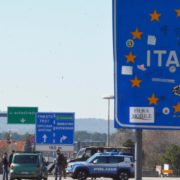Prime Minister Giuseppe Conte will open Italy’s national borders and allow citizens to move freely within the country starting June 3, a key step in his effort to revive the economy after more than two months of lockdown.
Although Italy never formally closed its borders and has allowed people to cross back and forth for work or health reasons, it banned movement for tourism and imposed a two-week isolation period for new arrivals.
But from 3 June, all visitors will be allowed back into the country and will no longer be obliged to self-isolate.
Italians will also be able to move between regions, though local authorities can limit travel in specific areas if infection numbers spike.
Italy’s restaurants, bars, and hairdressers are being allowed to re-open on Monday, two weeks earlier than initially planned.
Shops will also open and Italians will finally be able to see friends, as long as they live within their same region.
The current curbs will stay in place until after Italy’s Republic Day holiday on June 2 to prevent mass travel over the holiday weekend.
Questions remain over quarantine
It was not immediately clear from the government’s decree whether the measures were limited to European Union residents, but Italian media reported earlier on Friday that the decree would apply to people within the EU and Europe’s visa-free Schengen area.
Government sources told the daily La Repubblica and news agency Adnkronos that it will not be mandatory for travelers to self-quarantine upon entering Italy after June 3.
The government’s statement, however, did not mention what health and safety measures would be expected of travelers.
Support Prague Morning!
We are proud to provide our readers from around the world with independent, and unbiased news for free.
Our dedicated team supports the local community, foreign residents and visitors of all nationalities through our website, social media and newsletter.
We appreciate that not everyone can afford to pay for our services but if you are able to, we ask you to support Prague Morning by making a contribution – no matter how small 🙂 .




